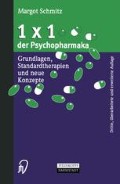Zusammenfassung
Chronische Substratbeeinträchtigungen führen zur Hirnleistungsschwäche (organisches Psychosyndrom). Häufiger als die organische Persönlichkeitsveränderung treten folgende Formen der Persönlichkeitsveränderung auf:
-
Paralyseartig: Persönlichkeitsveränderungen mit Triebenthemmung (überwiegend), Antriebstötung, Initiativeverlust und Beeinträchtigung der Urteilsfähigkeit stehen im Vordergrund, wobei das Langzeitgedächtnis besonders beeinträchtigt ist. Die Bezeichung geht auf das früher sehr häufige 3. Stadium der Syphillis zurück, die dieses typische Bild der zentralen Paralyse zeigt;
-
Erontokonvexe: „Aspontaneität“ und „Ausgeliefertsein an Außenreize“ stehen im Vordergrund; während eine Erregbarkeit von außen möglich ist, ist eine innere Motivation unmöglich;
-
Temporale: temporale Schädigungen zeigen sich in einer Unfähigkeit, Wahrnehmungen und Erfahrungen richtig zu bewerten: eine Modulation von Affekten und Befindlichkeit gelingt nicht adäquat;
-
Korsakow-artig: wenn die Hirnleistungsschwäche erhebliche Ausmaße erreicht, spricht man vom Korsakow-Syndrom. Das spezielle Kurzzeitgedächtnis ist geschädigt. Besonders sticht die Suggestibilität und Konfabulation ins Auge. Der Kranke glaubt leichtfertig und kritiklos, daß es sich zeitlich und örtlich um längst vergangene Ereignisse und Begebenheiten handelt; besonders typisch ist dieses Bild vorhanden im Anschluß an ein Delirium tremens bei chronischem Alkoholismus;
-
Hyperästhetisch-emotional: Schwächezustand, die Noo- und Thymopsyche betreffend: eine leichte Hirnleistungsschwäche ist mit einer dynamischen Verschiebung (Mischbilder und neuroasthenisch-ängstlich) kombiniert. Reizbarkeit und Schreckhaftigkeit gehen mit Verstimmbarkeit und vegetativer Labilität einher und fallen als „Launenhaftigkeit“ auf. Diese Zustände können endogene Psychosen einleiten und auch chronifiziert auftreten.
Access this chapter
Tax calculation will be finalised at checkout
Purchases are for personal use only
Preview
Unable to display preview. Download preview PDF.
Literatur
Amsterdam JD (1991) Refractory depression; advances in neuropsychiatry und psychopharmacology, vol 2. Raven, New York
Angst J (1987) Switch from depression to mania, or from mania to depression: role or psychotropic drugs. Psychopharmacol Bull 23: 66–67
Ballanger JC (1988) The clinical of carbamazepine in affective disorders. J Clin Psychiat 49 (Suppl): 13–19
Ban TA, Hippius H (1988) Thirty years CINP. Springer, Berlin Heidelberg New York Benkert 0, Hippius H ( 1986 ) Psychiatrische Pharmakotherapie. Springer, Berlin Heidelberg New York
Berner P (1982) Psychiatrische Systematik. Huber, Bern Stuttgart Wien
Black DW, Winokur G, Nasrallah A (1987) The treatment of depression - electroconvulsive therapy versus antidepressants - a naturalistic evaluation of 1495 patients. Compr Psychiat 28: 169–182 (10)
Byerley WF, Reimherr FW, Wood DR, Grosser BL (1988) Fluoxetine, a selective serotonin uptake inhibitor, for the treatment of outpatients with major depression. J Clin Psychopharmacol 8: 112–115
Chan CH, Janicak PG, Davis JM et al. (1987) Response of psychotic and non psychotic depressed patients to tricyclic antidepressants. J Clin Psychiat 48:197–200 (7)
Checkley S (1988) Monoamines, depression and antidepressant drugs. Pharmacopsychiatry 21: 6–8
Cohen S, Khan A, Johnson S (1987) Pharmacological management of manic psychosis in an unlocked setting. J Clin Psychopharmacol 7: 261–263
Ellison JM (1989) The psychotherapist’s guide to pharmacotherapy. Yearbook Med Publ, Chicago London Boca Baton
Feighner JP, Boyer WF (1991) Selective serotonin re-uptake inhibitors. John Wiley & Sons, Chichester New York
Friedmann A (1992) Leitfaden der Psychiatrie. Maudrich, Wien München Berlin
Grenn AR (1988) The mechanism of action of antidepressant treatments: basic aspect. Pharmacopsychiatry 21: 3–5
Haag H, Heidorn A, Haag M, Greil W (1987) Sequence of affective polarity and lithium responses: priliminary report on Munich sample. Prog Neuropsychopharmacol Biol Psychiat 11: 205–208
Haase HJ (1982) Therapie mit Psychopharmaka und anderen psychotropen Medikamenten. Schattauer, Stuttgart
Jaspers K (1973) Allgemeine Psychopathologie. Springer, Berlin Heidelberg New York Langer G, Heimann H ( 1983 ) Psychopharmaka. Springer, Wien
Laux G (1988) Psychopharmaka - ein Leitfaden. Fischer, Stuttgart New York Linde OK ( 1988 ) Pharmakopsychiatrie im Wandel der Zeit. Tilia, Klingenmünster
Matussek N, Hippius H (1984) Tabulae psychiatricae et psychopharmacologicae. Aesophus, Basel
Meryn S (1991) Schade, daß du schon gestorben bist. Strategien für ein persönliches Gesundheitsmanagement. Quintessenz, München
Muller B (1988) Psychotropics 88/89. Lundbeck, Heerlen Neth
Müller C (1973) Lexikon der Psychiatrie. Springer, Berlin Heidelberg New York
Pare CMB (1987) Monoamine oxidase inhibitors in the treatment of affective disorders. Psychiat Ann 17: 309–335
Paykel ES, Vanwoerkom AE (1987) Pharmacologic treatment of resistant depression. Psychiat Ann 17: 327–335
Pöldinger W, Gander G (1979) Psychopharmaka in der Praxis. Roche, Paris Pöldinger W, Schmidlin P, Wider F ( 1983 ) Index psychopharmacorum, Huber, Bern
Rees I (1987) Developments in the pharmacologic treatment of affective disorders. Psychiat Ann 17: 297–300
Saletu B (1989) Biologische Psychiatrie. Thieme, Stuttgart New York
Scott J, Barker WA, Eccleston D (1988) The Newcastle chronic depression study: patient characteristics and factors associated with chronicity. Br J Psychiat 152: 28–33
Spector R, Rogers H, Roy D (1984) Psychiatry: common drug treatments; practical problems in medicine. Dunitz, London
Wehr T (1987) Can antidepressants cause mania and worsen the course of affective illness. Am J Psychiat 144: 1403–1411
Author information
Authors and Affiliations
Rights and permissions
Copyright information
© 1999 Steinkopff Verlag, Darmstadt
About this chapter
Cite this chapter
Schmitz, M. (1999). Psychiatrische Nosologie. In: 1×1 der Psychopharmaka. Steinkopff, Heidelberg. https://doi.org/10.1007/978-3-642-53728-8_4
Download citation
DOI: https://doi.org/10.1007/978-3-642-53728-8_4
Publisher Name: Steinkopff, Heidelberg
Print ISBN: 978-3-7985-1198-9
Online ISBN: 978-3-642-53728-8
eBook Packages: Springer Book Archive

